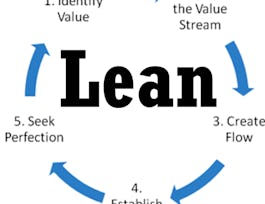This course is an introduction to the Java programming language and the concepts of object-oriented design. It not only covers the fundamentals of programming in Java, but it also brings in the concepts of object-oriented design and guides students to build GUI-based applications to address real-world problems. Topics include, but not limited to, fundamentals of programming in Java, classes and methods, objects and references, overloading, inheritance, polymorphism, abstract classes and interfaces, basic data structures, and GUI applications. Students are expected to apply learned knowledge to address an identified problem found in the real world.



Recommended experience
Details to know

Add to your LinkedIn profile
10 assignments
See how employees at top companies are mastering in-demand skills


Earn a career certificate
Add this credential to your LinkedIn profile, resume, or CV
Share it on social media and in your performance review

There are 4 modules in this course
In this module, you will be setting up the foundation to learn computation and programming, review the fundamentals of programming using Java programming language and write Java programs with basic syntax, including variables, I/O, Strings, control flow, conditions, methods, arrays, and file I/O.
What's included
6 videos52 readings1 assignment2 discussion prompts
You will continue exploring object-oriented programming by focusing on the concept of arrays of objects by creating and manipulating multiple instances of objects in a sequential manner, learning how to pass objects to methods, along with an in-depth examination of class abstraction and encapsulation. You will extend your exploration to wrapper classes and harness the capabilities of String, StringBuilder, and StringBuffer classes to devise solutions for real-world problems.
What's included
5 videos40 readings2 assignments1 discussion prompt
This module, you will be taking a closer look into the world of Graphical User Interface (GUI) programming which are the essential components of modern software applications, enabling users to interact with software in a visually intuitive and user-friendly manner. You will learn the fundamental principles of designing and creating basic GUI applications.During this week, you will also recall the fundamental characteristics of each GUI toolkit and articulate, and demonstrate the ability to configure a programming environment for JavaFX and apply basic programming skills to write and execute simple JavaFX applications and create user interfaces using pages, groups, UI controls and shapes.
What's included
4 videos39 readings2 assignments1 discussion prompt
This module, you will be introduced to event-driven programming, a paradigm to respond to various events or actions. Primarily focusing on how applications can be designed to respond to user actions on JavaFX GUI applications. This week's topic emphasizes explaining the mechanism and designing responses for interaction in JavaFX. You will also learn about the concept of handler classes in event-driven programming, including how handler objects are registered to respond to specific events. You will learn how to describe events, event sources, and event classes and apply that to write and analyze code that effectively manages and responds to various events.
What's included
9 videos49 readings5 assignments1 discussion prompt
Instructor

Offered by
Why people choose Coursera for their career




Recommended if you're interested in Computer Science

Open new doors with Coursera Plus
Unlimited access to 10,000+ world-class courses, hands-on projects, and job-ready certificate programs - all included in your subscription
Advance your career with an online degree
Earn a degree from world-class universities - 100% online
Join over 3,400 global companies that choose Coursera for Business
Upskill your employees to excel in the digital economy






